Community effort helps save fishway problem
Almost everybody associates the name “Huckleberry” with Mark Twain’s Huckleberry Finn and his comrade Tom Sawyer, but in the mining community, Huckleberry is also the name of a Canadian mine that has been in production in northwestern British Columbia since October 1997.
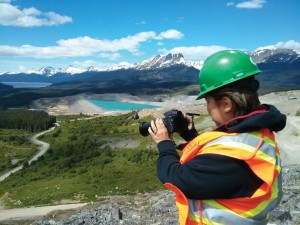
Shannon Haizimsque, Chief Operating Officer of the Yinka Dene Economic Limited Partnership, the commercial business arm of the Wet’suwet’en First Nations at the Huckleberry Mine site. Adjacent photo shows a series of steps lined with geotextiles and anchored with rock fill as part of the mine’s Fish Compensation Plan.
Huckleberry Mines Ltd. is an active open-pit copper/molybdenum mine located approximately 100km south of Houston, B.C.. Production rates (in 2014) were 34 million pounds of copper, 2,202 ounces of gold, and 183,218 ounces of silver and, like many mines today, it’s owned by a consortium of companies under one name, Huckleberry Mines Ltd (HML) of Vancouver.
The mine is owned and operated by Huckleberry Mines Ltd., which in turn is owned 50 per cent by Imperial Metals Corporation of Vancouver, and 50 per cent by a Japanese consortium including Mitsubishi Materials Corporation, Dowa Mining Co. Ltd., and Furukawa Co.
Partnering with First Nations
Since 2013, Huckleberry Mines Ltd. has signed communication & partnership agreements with five separate First Nations organizations: Wet’suwet’en First Nation, Cheslatta Carrier Nation, Office of Wet’suwet’en, Nee Tahi Buhn Indian Band, and Skin Tyee Nation.
Marke Wong, Manager of Environmental & Community Affairs for Huckleberry Mines Ltd. says, “These types of agreements have been instrumental in the success of Huckleberry Mine. Because of the open dialogue with Indigenous communities we have generated better understanding among all parties; and this has increased First Nations access to economic opportunities such as job training, employment and service contracts, and has provided Huckleberry with dedicated community partners and a strong reliable work force and able contractors.” For example, Wong says Huckleberry works directly with the economic development arm of its partners to provide training, jobs and developing on-call labour contracts, including the Yinka Dene Economic Development Limited Partnership (YLP), (Wet’suwet’en First Nation); the Nootsenay Enterprises, (Cheslatta Carrier Nation); the Hunust’ ot en Investment Corp (Nee Tahi Buhn Indian Band); and the Skin Tyee Nation.
He says, that in 2014 and 2015, the company spent more than 1200 hours of on-the-job training to students and interns from the Wet’suwet’en and Cheslatta Carrier First Nations who recently graduated from the Northwest Community College’s School of Exploration and Mining, Environmental Monitoring Assistant Program (EMAP) and other programs.
In keeping with Huckleberry’s involvement with the community, the company also supports the College of New Caledonia’s Mineral Processing Assistants Course by providing instructors, on-site mill tours, and job opportunities at the mine. Several member of the Nee Tahi Buhn Indian Band have been working as on-call positions as environmental monitors and confined space guards in the mill. Huckleberry staff regularly respond to community requests to attend, speak and sponsor community events such as career days, annual meetings, mine tours and traditional community gatherings.
“Developing successful mining arrangements with Indigenous people isn’t only about technical astuteness, it’s about relationships, reconciliation and the balancing of interests” says Wong.
It’s obvious from these brief examples that Huckleberry Mines Ltd. is taking its work with the First Nations seriously, but it’s more than that.
Mike Robertson, Chief Policy Advisor, Cheslatta Carrier Nation says, “In 2005, the Cheslatta Carrier Nation challenged the mine of its commitment to sound environmental management.
During the subsequent 10 years, Huckleberry management and staff committed to engage our people directly in planning and implementing a progressive reclamation program of old mining zone areas and in the development of new zones.
Just like the re-vegetated dams and tailings sites, our environmental relationship has blossomed too.” Chief Rene Skin, Skin Tyee Nation added, “Marke Wong of Huckleberry Mines has participated in our Nation’s annual gatherings including community open houses and cultural camps. He’s engaged directly with our youth and elders for the past two years.
He has been diligent in keeping us informed of changes to the on-going miner operation and opportunities for our people.”
Managing Impacts and Restoring the Land
Like all mining, there’s a certain impact to the natural environment, and following the closure of a mine, there are permanent changes to the landscape. The Huckleberry Mine is no exception.
Conventional drilling, blasting, loading and hauling using a combination of electric drills and shovels, diesel hydraulic excavators, and both 100 and 150-ton diesel-powered haul trucks are used to process approximately 17,000 tonnes of ore a day.
Milling is accomplished by grinding the ore in a 9.75m diameter SAG mill and then through two ball mills. The resulting slurry is processed by flotation to produce a concentrate of 27 per cent copper that is subsequently shipped by truck to the port at Stewart for storage and shipment to Japan.
Tailings from the milling process is discharged into a tailings management facility; and supernatant water is discharged to the aquatic environment through a pipeline to a submersed outfall and diffuser located in Tahtsa Reach, part of a man-made hydropower reservoir developed in the 1950s. All water discharged falls within their provincial and federal permit limits.
With this comes noise, dust, and all of the other factors associated with mining but, as mentioned earlier, Huckleberry Mines Ltd. is aware of the situation and addresses them through its Environment and Community Affairs Program, which includes a Fish Habitat Compensation Program.
And, it’s because of its efforts in this area, that Huckleberry Mines Ltd recently received the 2014 B.C. Metal Mine Reclamation Award from the B.C. Technical Research Committee on Reclamation (BCTRCR), and the Mining Association of B.C. (MABC) in recognition for outstanding practices in its fish habitat restoration program; a program that actually increased the available fish habitat in the area of the mine; as well as its successful relationship building efforts with First Nations.
Even before the mine was built, the company recognized that its mine’s footprint could have an impact on the available fisheries habitat in the area. In particular, “Creek 4,” a known fish-bearing stream was expected to be impacted; and so a plan was made to conduct some habitat enhancements in the area.
Fisheries surveys conducted by Hatfield Consultants of North Vancouver identified nearby “Creek M” which at the time, was not a fish-bearing stream due to a naturally occurring barrier to fish –i.e. a steep gradient reach that stopped any fish from reaching a headwater pond.
Huckleberry Mine’s plan involved constructing a series of steps or weirs lined with geotextiles and anchored with rock fill. These works were constructed by a team from Cariboo Divers from designs prepared by Hatfield Consultants.
Subsequent fish surveys conducted between 2001 and 2011 showed initial success and that adult rainbow trout were present in the headwater pond and juveniles were present in the lower reaches.
However, subsequent surveys conducted between 2008 and 2011 indicated that the juvenile fish numbers decreased to record lows in 2011. The decline in fish numbers was attributed to failure of the weirs in the lower and middle fishways, causing juveniles to become stranded in isolated pools, and precluding adults from reaching the preferred spawning habitat between the lower and middle fishways.
When initial monitoring of the remediated area in 2013 and 2014 was conducted, Environmental Monitoring Assistants from the Yinka Dene Economic Limited Partnership and the Nootsenay Enterprises Ltd. were called to assist in the evaluation of the stability of the constructed works as well as presence of fish, and the structural integrity of the fishways have remained intact through high-flow periods, with no erosion or undermining of the weir structures.
Cody Reid, Deputy Chief & Environmental Coordinator, Nee Tahi Buhn Indian Band said, “The design, construction monitoring and maintenance of the Creek M fishway has led to an overall net increase in fish habitat in the area surrounding the mine in Tahtsa Reach.” And David Belford, Mineral and Natural Resources Liaison Officer, Wet’suwet’en added,” The HML Environmental team, and participating consultants, are to be commended on their proactive approach to reclaiming the fish habitat and to increasing that habitat within the mine foot.” During the 2013 fish survey, 39 rainbow trout were captured, the largest number of fish observed since 2008. These observations were made even while construction of the middle reach fishways was ongoing.
Marke Wong says that Huckleberry’s plans are to continue monitoring to confirm the effectiveness of the restoration work, including hydraulic functioning, physical stability and structural integrity, fish distribution and net gain.
From the operation of a mine in the mountains, to the refurbishing of a fishway in a local waterway, Huckleberry Mines Ltd., continues to show its appreciation and respect for the environment and the First Nations communities it works with in British Columbia.
Perhaps the most important message for industry is that the example set by Huckleberry Mine and its First Nation community partners demonstrates that when parties begin to have meaningful dialogue, and understanding develops on both sides, then the path to cooperation and partnership is open.
In the case of Huckleberry Mine, this has led to the development of partnerships that have helped it expand its operations; and have help provide support during tough economic times.
The nomination of Huckleberry Mines Ltd. for the 2014 BC Metal Mine Reclamation Award came from its First Nation Partners because, as Chief Karen Ogen said, “Our partnership with Huckleberry Mines has made a big difference in our small community. Since the 2013 partnership agreement was signed, our people have benefitted from jobs, training and business opportunities. Our experience with Huckleberry has been very positive and we have greatly appreciated Huckleberry’s efforts to engage with our community and to work with our business arm, the Yinka Dene Economic Partnership. The Wet’suwet’en First Nation is very pleased to nominate Huckleberry Mines for this award.”
And lastly, Mike Robertson added, “ The Cheslatta Carrier Nation has been a successful Huckleberry Mines Limited contractor on a number of projects including a tailings dam. We have our members employed by Huckleberry Mines, and we maintain regular contact with its staff and management on all aspects of operations. We support the nomination because we are confident they will continue and enhance their innovative and progressive practices of returning the land to a near natural, self-sustaining state.”
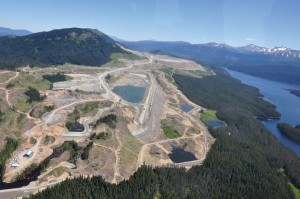
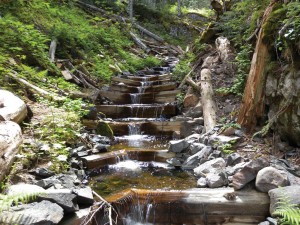

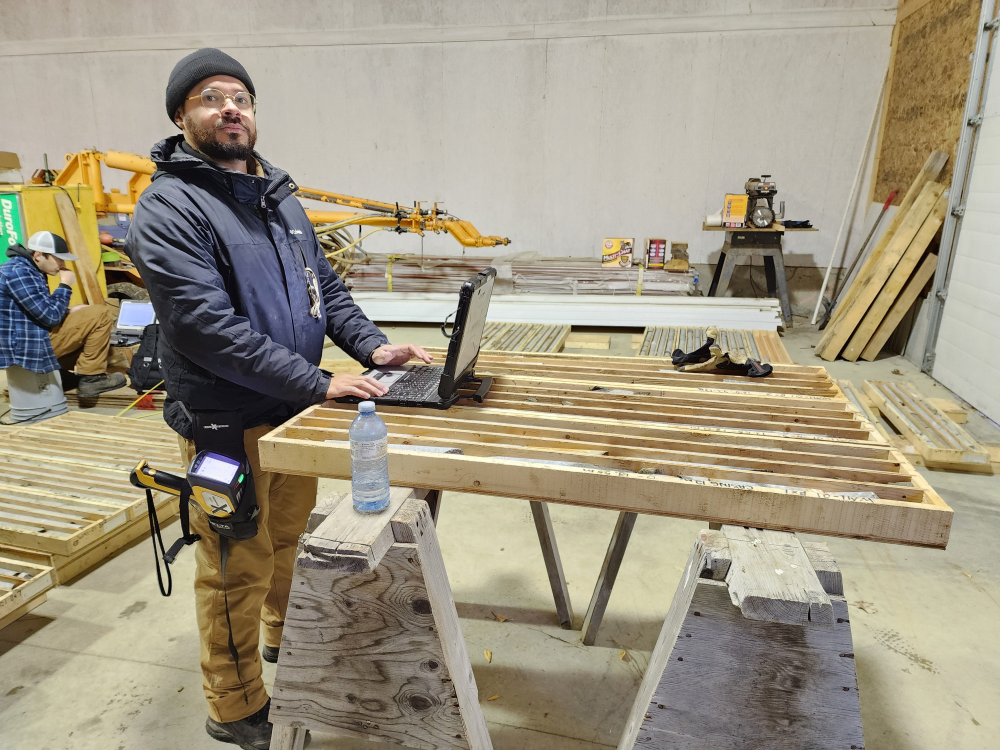


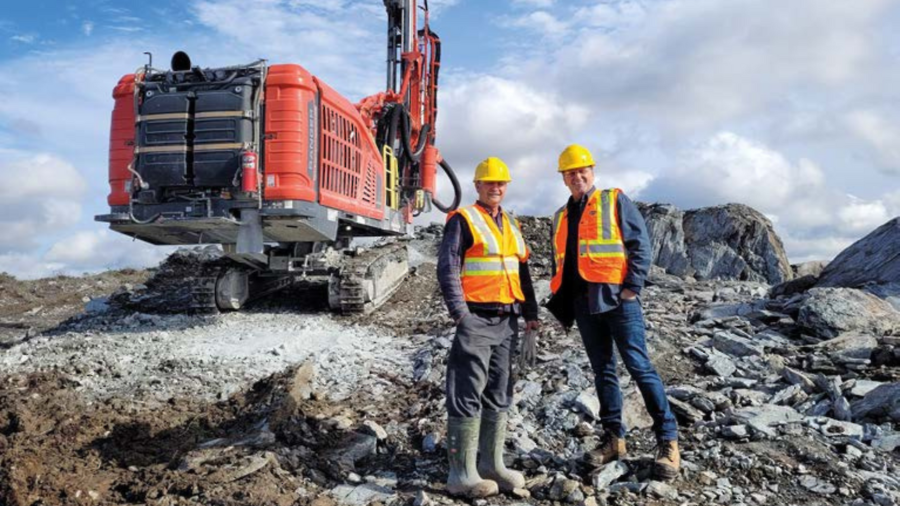
Comments